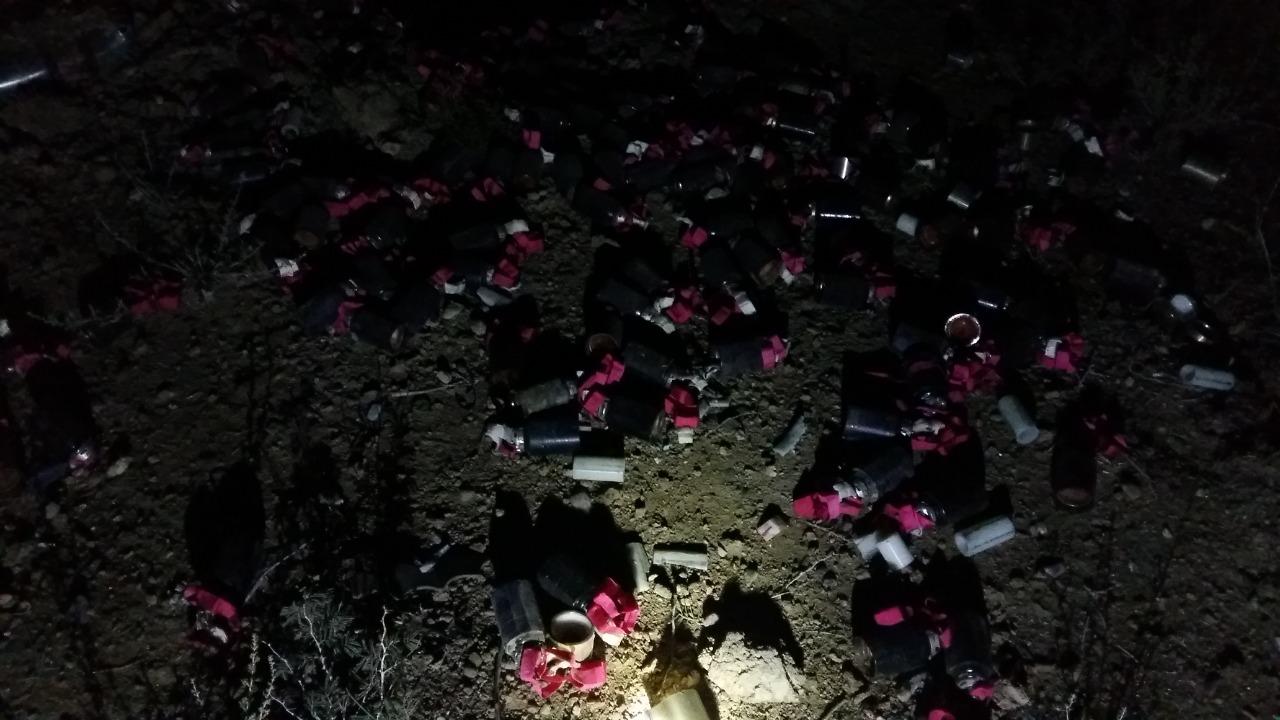The armed forces of Armenia attempted to blow up the Baku-Tbilisi-Ceyhan (BTC) pipeline, which transports crude oil from Azerbaijan to the markets in Europe.
The Prosecutor General’s Office of Azerbaijan reported that the pipeline’s segment passing through the central Yevlakh district of Azerbaijan was targeted by a missile fire at about 9 pm on Tuesday. The air defense units of Azerbaijan neutralized the missile before it reached the target.
Hikmat Hajiyev, a senior aide to Azerbaijan’s president, confirmed the attempt on the Baku-Tbilisi-Ceyhan oil pipeline, adding it was a prohibited cluster rocket fired at the strategic energy route.
“In the vicinity of Yevlakh region, rocket landed 10 meters away from BTC pipeline,” he wrote in his Twitter page. “300+ Cluster bomblets eject around. No damage to pipeline … Desperate attempts of Armenia to attack energy infrastructure.”
Photos and video footage from the site showed dozens of cluster submunitions scattered on the ground near the pipeline. A cluster munition, or cluster bomb, is a weapon that contains multiple explosive submunitions. Cluster munitions are dropped from aircraft or fired from the ground or sea, opening up in mid-air to release tens or hundreds of submunitions, which can shell an area up to the size of several football fields. The international Convention on Cluster Munitions (CCM) treaty addresses the prohibition of the use, transfer, and stockpiling of cluster bombs. As of September 2020, 123 states have committed to the goals of the Convention, of which 110 have become States Parties and 13 are Signatories.
Officials in Switzerland, the country that holds the CCM presidency, voiced deep concerns over the reports on the use of cluster munitions in the conflict in Azerbaijan’s Nagorno-Karabakh region. Switzerland called for full respect to the international humanitarian law and refrain from deploying cluster bombs, as they are indiscriminate and can inflict serious damages on civilians and civilian objects.
The State Oil Company of Azerbaijan Republic (SOCAR) and oil giant BP announced on Tuesday that no pause occurred in BTC operation in the wake of Armenia’s attack. BTC, measured 1,768 kilometer in length, is a major route that carries Caspian crude oil from Azerbaijan to the Ceyhan port city of Turkey through Georgia’s capital Tbilisi. From there, the crude is transported to European markets via the Mediterranean Sea. BTC supplies account for up to 80 percent of Azerbaijan’s oil exports. Daily capacity of the pipe is 1.2 million barrels or over 1 percent of global supplies. In addition to Azerbaijani oil, it also carries volumes from Turkmenistan, Russia, and Kazakhstan. BTC supplies play a significant role in enhancing Europe’s energy security.
Rating agency S&P regards the current situation of the conflict as “smouldering,” however, it does not exclude its implications on transcontinental energy flows should hostilities flare up further.
“We will follow the implications for the sovereign finances, energy flows and companies’ liquidity in case of further escalation of the conflict,” it told Reuters on September 28.
Armenia’s forces targeted the BCT line during the ongoing clashes with Azerbaijan, which are now in its eleventh day. The tensions between the two countries turned violent on September 27 after the heavy shelling of military and civilian positions of Azerbaijan by the Armenia's troops. Azerbaijani army took immediate counter-attack measures to repel the assault. The hostilities gained pace with the deployment of heavy artillery by both sides.
The armed forces of Azerbaijan have so far liberated the city of Jabrayil and up to twenty villages in the districts of Jabrayil, Fuzuli and Tartar from Armenia’s occupation during the counter-attack campaign.
Since the very beginning of the skirmishes, Armenia's forces targeted civilians and civilian infrastructure in various districts and cities of Azerbaijan, including the second-largest city of Ganja, which locates far from the conflict zone, and the city of Mingachevir, which is home to the country’s largest hydropower station. As of October 7, 28 civilians in Azerbaijan were killed and 144 civilians wounded in the wake of Armenia’s shelling. A total of 66 civilian facilities and 427 houses were damaged seriously, while dozens were completely razed to ground.
The conflict in Azerbaijan’s Nagorno-Karabakh conflict is one of the world’s and region’s oldest. The three-decade-long conflict is the result of Armenia’s aggression against Azerbaijan shortly after the dissolution of USSR in 1991. A full-fledged military campaign of Armenia turned the Nagorno-Karabakh region of Azerbaijan into a hotbed of bloody war until a ceasefire deal was reached in 1994.
By the signing of truce, Armenia’s forces occupied Nagorno-Karabakh, an Azerbaijani region around 4,400 square kilometers (1,700 square miles) or about the size of the U.S. state of Delaware, and seven surrounding districts, all comprising 20 percent of Azerbaijan’s internationally recognized sovereign territory. The occupied lands were subjected to ethnic cleansing to forcibly displace about one million ethnic Azerbaijanis. Casualties of Azerbaijan during the war were 30,000.
Although the international community recognize the occupied lands as part of Azerbaijan’s territory and four UN resolutions demand immediate withdrawal of the occupying forces from Azerbaijani lands and return of internally displaced Azerbaijanis to their ancestral lands, all four legally binding documents go unfulfilled by Armenia to date.







 The Mine Action Agency of Azerbaijan (ANAMA) reported on Thursday the discovery of a significant amount of explosives in the Khojavand district of ...
The Mine Action Agency of Azerbaijan (ANAMA) reported on Thursday the discovery of a significant amount of explosives in the Khojavand district of ...
 Iran’s Foreign Minister, Hossein Amir-Abdollahian, has labeled a foiled Israeli drone attack in certain parts of the country as a "failure" for Isr...
Iran’s Foreign Minister, Hossein Amir-Abdollahian, has labeled a foiled Israeli drone attack in certain parts of the country as a "failure" for Isr...
 Iran has refuted reports of alleged damage to Shimon Peres Negev Nuclear Research Centre located southeast of Dimona, Israel, during the recent air...
Iran has refuted reports of alleged damage to Shimon Peres Negev Nuclear Research Centre located southeast of Dimona, Israel, during the recent air...



